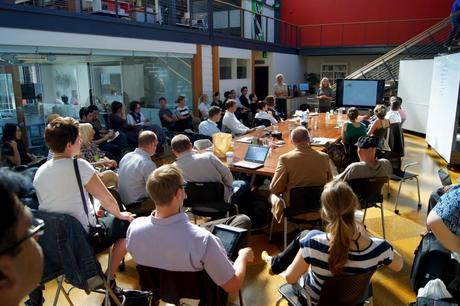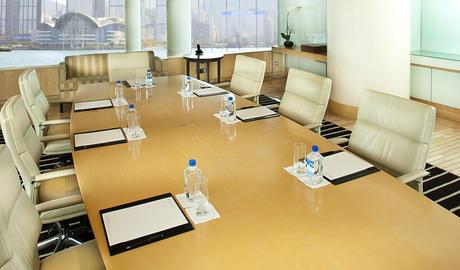
The art to the “perfect” meeting is still a mystery. Anyone from novice to veteran will agree, running an effective meeting can be daunting. Here are 6 essentials to help you in conducting a productive (and fun) meeting.
The Need
First, assess whether a meeting is necessary. You should initiate a meeting only when you want feedback or discussion to complete a specific purpose or task. If the meeting can be summarized in a quick email or conversation, save yourself, and the company, the time and money by having a brief exchange.

The Agenda
The agenda serves as a roadmap for your meeting. When creating your agenda, ensure you have a purpose or a set of meeting topics. Your purpose identifies a goal(s) or decision(s) to complete by the conclusion of the meeting; it should be clear, direct, and attainable. A vague purpose can gradually make the meeting tedious and banal.
The meeting topics consist of a list of discussion points, presentations, questions, etc. to guide the meeting and should answer the following questions:
- What are the main topics to cover?
- Are there any outstanding items to pursue?
- Do I need a presentation tool? If so, which will best convey your message?
- What is your desired result?
- What are potential action items to follow this meeting?
Once these questions are answered, you can begin the final product. The agenda should be concise, progressive, and illustrate a clear item or task for discussion. Simplicity is key.
The Invite List
Next, tackle your invite list. Please remember: this is a meeting, not a party. A successful meeting should consist of a few key players, preferably less than 10 total attendees. The selected participants are contributors or decision makers for your agenda. A few types of participants you should have are:
- Gatekeepers for budgets and financing
- Minimum Leadership required to make decisions and final approvals
- Those associated to tasks and topics on the agenda
- Those associated to future tasks and topics that will stem from the agenda
If you have any hesitations, feel free to have a quick meeting with your boss for their feedback; discuss the agenda you have assembled, and integrate their advice or input as you see fit. Once your Invite List is finalized, assign each topic on your agenda to an invitee if possible.
TIP: Microsoft Outlook has a great feature to bucket attendees into required and optional. Place your key players in the “required attendees” bucket, and others as optional.

The Visual
Visual tools can range from bullet lists and charts, to a few sentences that summarize the topic. Regardless of the method you choose, the delivery should be compact and intuitive. The popular corporate phrase for visuals is to “tell a story”. A few guidelines on visually telling your story are to:
- Have a progression based on chronology or lineup of topics
- Present your ideas in 3’s such as 3 topics, 3 bullets, or a 3 word slogan (“Yes We Can”)
- Find alternatives to PowerPoint slides (i.e. handouts, one summary sheet, storyboards)
- Have at most of 3-4 charts or tables per slide/handout
- No JPEGs, GIFs, intense audio clips, or heavy slide transitions
Visual tools are not required for every meeting, sometimes an agenda is sufficient. Use your best judgement on whether a visual is necessary.

The Practice Run
The best way to prepare is to mentally simulate your meeting. As the coordinator, imagine how you will field potential questions; avert tangential conversation; and identify hidden challenges. Though this can feel like day-dreaming, mental preparation builds your confidence in your approach and develop strategies prevent obstacles.
If you have a presentation, then practice, practice, practice! And don’t forget, practice! Once you have perfected your content, focus on your transitions; how your hands will move; and the different inflections and intonations you want to use. Your confidence will shine through in a well-rehearsed presentation.
On the day of, check up on the minute details, such as:
- The Attendee Status: Outlook has a great feature to see who has accepted your invite
- Resources: Ensure your room exists, the projector is available, and your laptop functions
- Webinar/Conference: The invite includes the webinar link and conference call numbers
- Final Agenda: Include your final Agenda in the invite
With everything in place, you are ready for your meeting!
The Follow-Up
The follow-up email benefits all members of the meeting, serving as a summary of the meeting and providing a list of tasks or inquiries. A timeline is a great example of effectively condensing a set of tasks in chronological order, simple for all participants to understand. The follow-up is best sent soon after the meeting, or at the latest, by the end of the business day.
Once you have sent your follow-up email, you have officially completed the your meeting!

